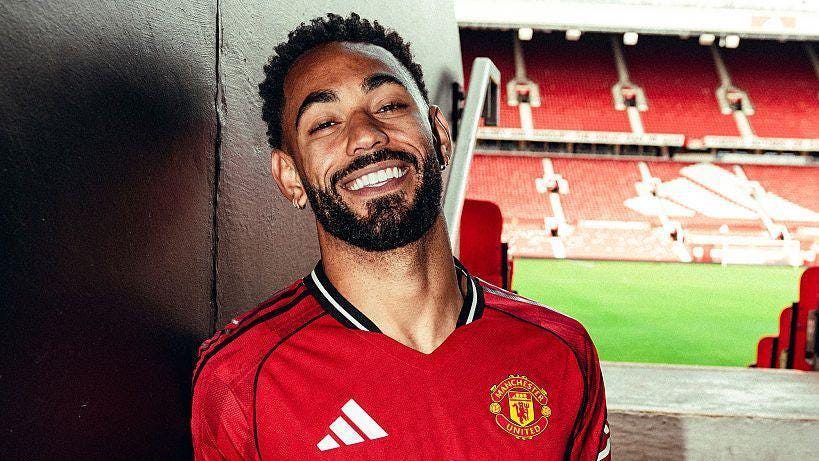Cash Is No Longer King: How Clubs Keep Spending Without Money
Football’s biggest transfers are happening without the money to match.
When Manchester United announced the £60 million signing of Matheus Cunha, it raised more than a few eyebrows. This is the same club that has spent the past six months slashing costs, cutting their wage bill, and offloading staff just to stay on the right side of Profit and Sustainability Rules. Yet here they were, dropping tens of millions on a new forward.
Every summer, now follows a similar script. We’re told clubs are strapped for cash, forced to sell before they buy, clinging to PSR margins and begging for leeway from regulators. Then the market opens, and within weeks, nine-figure deals are flying around like nothing ever changed. If you're confused, you're not alone.
Clubs are pending big right now, with Chelsea leading the way at around £210 million, according to multiple outlets. Liverpool and Manchester City are also among the top spenders, each reportedly exceeding £100 million. Across Europe’s top five leagues, total spending is rising quickly, but final figures remain fluid and unconfirmed.
That’s despite consistent warnings about unsustainable wage bills, escalating operating costs and tighter financial regulations, and the Premier League charging several clubs over alleged Profit and Sustainability Rule breaches. So how are they doing this?
The short answer: they’re not really paying for much upfront.
Welcome to the era of structured spending. Deals today are less about raw money and more about what you can promise over time. Transfers are now multi-year financial instruments that are spread across contract lengths, accounting windows, and performance-based triggers.
Take Chelsea’s 2022–23 transfer spree. The headline number was over £600 million across two windows and this sparked a lot of speculation. But those deals were amortised across seven or eight-year contracts, allowing Chelsea to log just a fraction of the cost each year on their books. Matheus Cunha’s £60 million deal to United this summer and those that are still to come? Same story. They’re not single payments. They’re based on a long-term layout, £20 million now, £10 million in add-ons, £5 million if a player hits international caps, and so on.
This structure lets clubs appear financially disciplined while still spending big. And it matters because of UEFA’s Squad Cost Rule, introduced in 2023, which caps total spending on wages, transfers, and agent fees at 70% of revenue. By staging payments, clubs reduce the annual burden, making it easier to stay compliant, at least on paper.
Follow me for more football, life, and other sports updates: Instagram
But it's not just about amortisation. Clubs have also become experts in manipulating wage structures, offloading fringe players through creative loans, and generating phantom revenue via related-party sponsorships or internal asset valuations. It’s financial gymnastics. Chelsea even sold its women’s team to themselves.
Manchester City’s recent summer illustrates this perfectly. They’ve reportedly spent over £100 million already, but their net spend appears far more modest thanks to outgoing sales, staggered fees, and a few smart loans. Their squad looks refreshed, but their books still balance.
The rise of loans with options to buy is also key. Clubs like Inter Milan and Roma have built squads this way. Instead of committing to a permanent deal, they secure a player on loan, with a purchase obligation triggered by appearances, qualification milestones, or even time-based clauses. It spreads the cost, delays the accounting hit, and buys breathing room within FFP and PSR limits.
And then there’s the unspoken reality: no one wants to call bluff. Governing bodies talk tough, but real punishments are rare. Clubs are gambling on regulators being slow, inconsistent, or willing to negotiate. Until a true financial giant gets docked points or banned from competition, this cycle of theoretical restraint and practical extravagance will continue.
The ecosystem around the market has also matured. Sporting directors now operate more like financial strategists than scouts. Data modelling, amortisation curves, risk assessments, it’s as much about spreadsheets as it is about skillsets. Agents pitch players not just with highlight reels, but with monetisation plans, social media engagement charts, and projected resale value. It’s a marketplace of assets, not athletes.
None of this is to say clubs aren’t under pressure. Stadium expansions, rising wages, and contract buyouts all strain the model. But what we’re seeing isn’t the end of the high-spend era, it’s a shift in how that spending is justified, processed, and reported.
There is still plenty of money in football. It's just hidden under layers of accounting, unlocked with clever structuring, and shaped by pressure from fans, sponsors, and media. Clubs can’t afford to fall behind on the pitch, even if they’re walking a financial tightrope behind the scenes.
So the next time you hear a CEO talk about belt-tightening, remember: the financial playbook in football is more flexible than ever. And as long as clubs can keep dancing around the margins, paying in parts, selling on upside, and dressing loans as bargains, they’ll keep spending.
They may look broke on paper. But business is still booming.
Thanks for reading, David Skilling.
If you hit the like button, you’ll be doing me a huge favour, and if your business needs sports writing, wants to discuss advertising, or you have PR stories to pitch, feel free to get in contact.
If you know someone who will enjoy this article, please share it with them.




